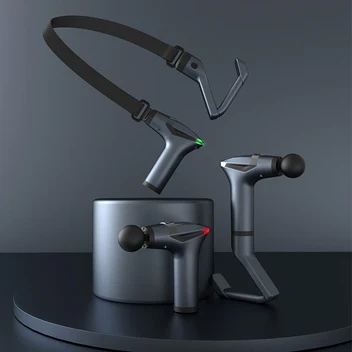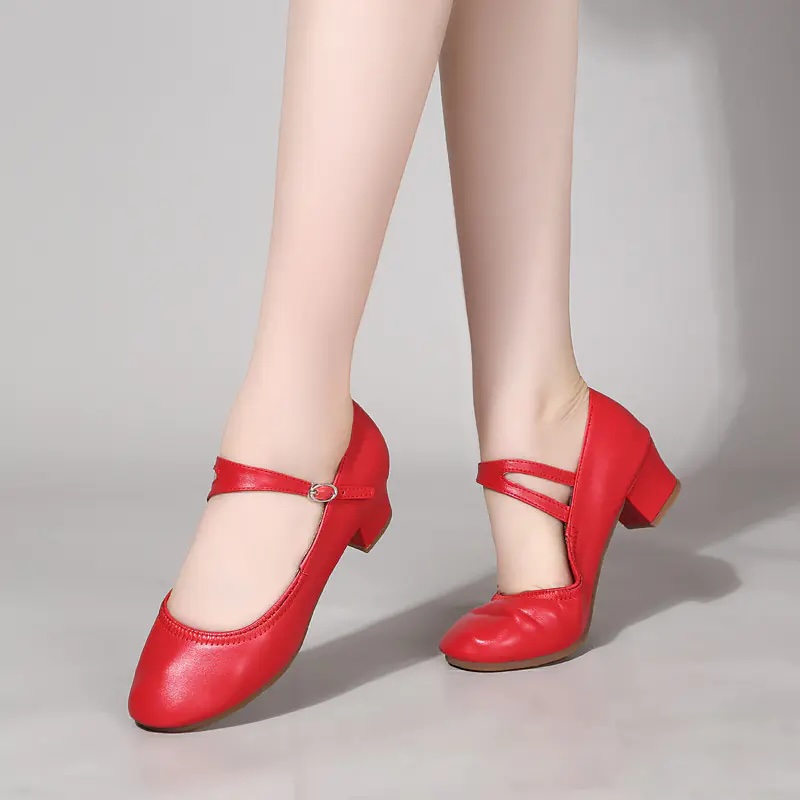Unleash Your Dance Spirit!
Discover premium dance gear, exclusive merchandise, and everything you need to dance your absolute best. Join thousands of passionate dancers worldwide!





Karkowiak dance in Poland: Origin, History, Costumes, Style, Technique, and Music
Exploring the rich tapestry of Polish folk dance reveals a vibrant component of the nation's cultural heritage. One such treasure is the Karkowiak dance, a gem originating from Lesser Poland that captures the spirit and energy of its people through every step and beat.
For those intrigued by traditional dances or seeking to understand more about Poland's national identity through its art, the Karkowiak offers a fascinating journey into a world where music and movement tell stories of history, community, and celebration.
The Karkowiak is renowned for being one of Poland’s most beloved national dances, characterized by its lively syncopation and duple time rhythm that invites both dancers and viewers into an engaging performance.
This article aims to illuminate everything from the origins and development of this captivating dance in Krakow region to its distinctive style, costumes, choreography techniques, and accompanying folk music.
Delve into an exploration that promises not only insights into the Karkowiak but also highlights how it reflects broader aspects of Polish culture and traditions. Get ready to be swept off your feet!
Origin and History of the Karkowiak Dance
The Karkowiak dance roots in the Krakow region of Poland and has a rich history of development and spread.
Roots in the Krakow region
The roots of the Karkowiak dance find their origin in Lesser Poland, particularly around the Krakow region. This area, known for its rich cultural heritage and traditional Polish customs, became the birthplace of what would later emerge as a national symbol of Poland's dance tradition.
As a regional dance style, it reflects the essence and vibrancy of Krakow's folklore.
Local communities in Krakow embraced this syncopated folk dance, often performing it during festive occasions and gatherings. It was here that the unique choreography and energetic steps of Karkowiak were honed to perfection.
Influenced by other traditional Polish dances like the Polonaise (Polonez), Mazurka (Mazur), Kujawiak, and Oberek, Karkowiak quickly gained popularity for its lively tempo set in duple time music.
Its distinctive characteristics made it stand out from other dances in Poland and contributed to its spread beyond the borders of Lesser Poland.
Development and spread of the dance
The Karkowiak dance originated in the Krakow region of Poland and has deep roots in Polish culture and tradition. Over time, this lively and energetic dance style spread beyond its place of origin and became a national dance of Poland, gaining popularity both within the country and internationally.
The unique rhythm and syncopated movements of the Karkowiak have contributed to its widespread recognition as a significant cultural heritage not only in Lesser Poland but also across various regions with Polish communities around the world.
As part of its development, the Karkowiak has evolved to encompass regional variations while retaining its core essence, making it adaptable to different styles and settings. Today, it is performed at traditional folk events, as well as in modern ballroom dancing, showcasing its versatility that continues to contribute to preserving Polish traditions through dance.
The Karkowiak Dance: Description and Style
The Karkowiak dance, a national dance of Poland, is characterized by its syncopated and energetic movements. It is danced in duple time, making it a lively and dynamic display of traditional Polish culture.
A national dance of Poland
The Karkowiak dance holds the distinction of being a national dance in Poland. With its roots deeply ingrained in the Krakow region, it has become an integral part of Polish cultural heritage.
This high-energy dance is characterized by its syncopated rhythm and lively movements that captivate both performers and spectators alike. Its duple time signature sets it apart, adding to the vibrant atmosphere of traditional Polish folk music events.
The Karkowiak dance symbolizes Poland's rich history and serves as a testament to the country's enduring cultural identity. Its presence at regional gatherings and celebrations showcases its importance in preserving Polish traditions while bringing people together through the joyous expression of movement and music.
Syncopated and energetic
The Karkowiak dance is known for its syncopated and energetic style, reflecting the vibrant spirit of Polish culture. Dancers perform quick, lively steps in duple time, creating a dynamic and captivating display.
The syncopated rhythm adds an exciting flare to the dance, making it a popular choice for both traditional folk performances and modern interpretations.
Moving on to Costumes and Music of the Karkowiak...
Duple time dance
The Karkowiak dance is characterized by its energetic and syncopated movements, performed in duple time. Duple time means that the music has two beats in a bar, which reflects the lively and spirited nature of this traditional Polish dance.
The dancers move to the rhythm with precise footwork and coordinated gestures, creating an engaging spectacle for spectators. This unique style of dance adds to the rich cultural heritage of Poland, making it a significant aspect of traditional folk music and dance.
The duple time nature of the Karkowiak not only emphasizes its lively and rhythmic character but also contributes to its popularity as a captivating national dance. The distinctive choreography requires skillful execution from the dancers, making it an integral part of Polish culture and history.
Whether performed at local gatherings or on grand stages, the duple time dance continues to showcase Poland's rich tradition through its dynamic movements.
Costumes and Music of the Karkowiak
The Karkowiak is accompanied by traditional ethnic costumes and lively folk music, which add to the vibrancy of the dance. Regional variations in costumes and styles reflect the cultural diversity of Poland and its rich folk music traditions.
Traditional ethnic costumes
The traditional ethnic costumes worn during the Karkowiak dance are vibrant and symbolic of Polish culture. Each region in Poland has its own unique style of costume, showcasing intricate embroidery, colorful patterns, and traditional fabrics like linen and wool.
The costumes often include a variety of accessories such as vests, aprons, headpieces, and decorative sashes that hold cultural significance. These costumes play an essential role in preserving the rich heritage of Polish folk traditions and add to the visual spectacle of the Karkowiak dance performance.
Regional variations in costume designs reflect the diverse cultural influences within Poland. The attire worn during the Karkowiak dance is a testament to the country's historical roots and serves as a source of pride for local communities.
The elaborate detailing and craftsmanship seen in these traditional ethnic costumes highlight the deep connection between dance, music, and folklore in Poland's cultural tapestry.
Regional variations and styles
The Karkowiak dance features regional variations and styles, reflecting the diversity of Poland's cultural heritage. From the dynamic steps in Lesser Poland to the graceful movements in Mazovia, each region boasts its own unique interpretation of this traditional dance.
In addition to the well-known Krakowiak costume, distinct attire and accessories are prevalent across different regions, adding a vibrant visual element to the performances. Furthermore, varying rhythms and musical influences contribute to the distinctive styles observed in different parts of Poland.
These regional variations highlight the rich tapestry of Polish folk traditions, with each style offering insight into specific customs and historical influences. As dancers engage with these diverse interpretations, audiences are treated to a captivating showcase of Poland's cultural complexity.
Traditional folk music
Traditional folk music plays an integral role in the Karkowiak dance, providing a lively and rhythmic accompaniment to the energetic movements. The music is deeply rooted in Polish culture and often features traditional instruments such as the violin, accordion, and clarinet.
Regional variations of the Karkowiak dance are often accompanied by unique musical arrangements, showcasing the rich diversity of Poland's folk music traditions. The spirited melodies and intricate rhythms of traditional folk music add depth and authenticity to the Karkowiak dance, making it a vibrant representation of Poland's cultural heritage.
Moving onto discussing "Technique and Choreography of the Karkowiak"...
Technique and Choreography of the Karkowiak
The Karkowiak dance involves unique choreography and dance techniques that showcase the influence of traditional Polish culture. To learn more about the intricacies of this captivating dance form, keep reading!
Unique choreography and dance techniques
Karkowiak dance features unique choreography and dance techniques that are deeply rooted in traditional Polish culture. The choreography incorporates lively and energetic movements, with a focus on syncopated rhythms that give the dance its vibrant character.
Dancers often perform intricate footwork, emphasizing precise steps and patterns that reflect the influence of regional dance styles from various parts of Poland. These techniques showcase the dynamic nature of the Karkowiak, making it a captivating display of skill and artistry.
The dance also encompasses a distinct blend of arm movements and formations, adding an element of visual storytelling to the performance. This attention to detail in choreography underscores the importance placed on preserving the authenticity and richness of Polish folk dances.
With its spirited rhythm and elaborate footwork, the Karkowiak's unique choreography continues to delight audiences while honoring Poland's rich cultural heritage.
Influence of traditional Polish culture
Influence of traditional Polish culture can be seen in the unique choreography and dance techniques of the Karkowiak. Traditional Polish values and customs are reflected in the intricate footwork and lively movements, showcasing the resilience and spirit of the Polish people.
The use of regional variations and styles in costumes highlights the rich diversity within Poland's cultural heritage, adding depth and authenticity to this national dance.
The traditional folk music accompanying the Karkowiak is deeply rooted in Polish culture, with its distinct melodies and rhythms evoking a sense of pride and nostalgia among performers and audiences alike.
The influence of traditional Polish culture not only enriches the technique and choreography but also contributes to preserving Poland's cultural identity through this vibrant dance form.
Conclusion
The Karkowiak dance is deeply rooted in the rich history and culture of Poland, with its origins in the Krakow region. The energetic and syncopated style, coupled with unique choreography techniques, makes it a standout national dance of Poland.
Traditional ethnic costumes and folk music add to the allure of this captivating dance form. Embracing the simplicity and practicality of this art form can lead to a deeper appreciation for Polish tradition and heritage.
Exploring further into the world of Karkowiak dance will unveil secrets that are sure to inspire dancers worldwide.
FAQs
1. What is the origin and history of the Karkowiak dance in Poland?
The Karkowiak dance comes from Lesser Poland, a region known for its rich cultural traditions. It has a long history that goes back to when people celebrated with lively steps and music.
2. What kind of costumes do dancers wear for the Karkowiak?
Dancers performing the Karkowiak wear traditional Polish costumes that are colorful and decorated with intricate designs, reflecting the vibrant spirit of Lesser Poland.
3. How does the style and technique of Karkowiak compare to other dances like Mazurka or Polonaise?
Karkowiak features fast, energetic steps and cheerful music, making it distinct from the more reserved and elegant movements found in dances like the Mazurka or Polonaise.
4. What type of music accompanies the Karkowiak dance?
Music for the Karkowiak is upbeat and lively, often featuring traditional instruments such as violins and accordions, creating a joyful atmosphere for both dancers and spectators.
Karkowiak dance in Poland Quiz
Test your knowledge about karkowiak dance in poland




 Sign in with Google
Sign in with Google